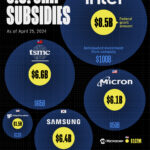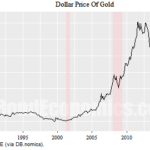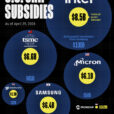
1995 represented a major turning point in the financial markets. The futures markets ruled supreme with the tail wagging the dog in the underlying cash markets. Few saw the significance of 1995 though, as it marked the introduction of Windows 95 and Internet Explorer. However, the real change came in 2000 when DSL lines became available. This provided secure and permanent access to the Internet with limited downtime. As the new Millennium progressed so did the broadband market. However, proceeding this period the futures market had moved from an on-floor open outcry system to a computer trading system where the connections were made from the exchanges to the broker’s offices. The adaptation of this model onto the internet was the next logical progression. This is when on-line trading became a reality for the many and not the privileged few in the know.
This is where Swiss, online FX brokerage firm, MIG Investments, became a reality, providing the private client in the street the ability to trade. Not on a phone driven, high-commission base, such as the futures market, but into the deepest market in the financial world – foreign exchange. The liberalisation of the FX market to the retail market was a revolution in financial markets and one that could only have taken place in the foreign exchange market where competition was global and not exchange driven.
The pattern within the retail space of FX markets has seen a great deal of competition and reputation is one of the defining elements. This has spawned the need for brokers to enhance their offerings and services to the client. As much as the offer of tight spreads is attractive, the ability to trade at the price shown is paramount. The other aspect is what the client receives as an added benefit. In the case of MIG, this has become multifaceted. The latest string to the bow has been the introduction of a research department.
Increasingly sophisticated
Understanding that the private client market was becoming increasingly sophisticated, the company sought to provide a world class base for its research. As Head of Research, I was appointed to create an investment bank quality research department that could deliver a standard of research product as yet unseen in the Retail FX space. The recent addition of Paul Day, Deputy Head of Research, and Bill Hubard, Chief Economist, to the team has given MIG a commanding industry edge in providing qualitative and unique research products to clients. Paul is a market professional of 14 years experience gained, like myself in tier one banks in the City of London. Bill Hubard’s appointment as Chief Economist was a coup d’état for MIG, by securing the services of a leading market professional who has been the face of economics and bonds on both Bloomberg and CNBC Europe. His charismatic charm and knowledge has provided a real depth to the company’s offering to the public. It certainly will be a pleasure for the investors and traders when they attend expos and road shows to be able to engage with top flight professionals such as these.
Research is a critical aspect to the understanding of the markets. Whether the clients agree or disagree with the analysis, ultimately it is they who will press the button to execute the trade. Thus, to have the ability to lean against such a deep experience base can only be of benefit in the long run. No trader or analyst gets the markets right 100% of the time but in times of trouble it is always more comforting to be able to know that those that are providing the analysis have ‘been there and done it’ with the top-end market and it is their desire to create an environment where the private client is getting the same advantages.
Futures market
The start of this piece talked of the revolution that the Internet and DSL provided to the private client. Previously, the only way that private clients could gain cheap and leveraged access to the market was via the futures market. This, however, was expensive and required phone calls with no surety to price until the trade had been executed. Even when the technological revolution occurred, access to the futures market remained expensive with commission on entry and exit; margin calls, in the form of variation margin and initial margin. But more importantly, few would provide exclusive trading platforms for clients which are as complete and user friendly as those in the FX markets. The trading advantages of FX have been demonstrated during 2007, with depth of market and high volatility. It is the high volatility that has been one of the strongest attractions to traders and no market has been as volatile as the FX market.
When the Futures market was started it was at a point in time when high interest rates and inflation ruled the economic background and this was one of the market’s strengths. It provided multiple users with varying demands an efficient market for hedging, trading, position neutralisation, cash futures arbitrage, and so on. All of this provided the market with movement that allowed short term traders to have a real advantage to act in some respects as short term liquidity providers as the market found equilibrium. In the FX market, the advantages today are similar to those of the futures market at its inception. A position that is now lost for the futures market as a result of low interest rates and bond yields.
The real attraction of the foreign exchange market for private clients is its cost-free trading base. Its trading platforms, like Metatrader as employed by MIG, are robust platforms with inclusive charts, position management, statements, direct access to trading and direct research delivery. As the private client becomes more advanced in their trading, some move to utilise the “black box” or expert advisors programming which MIG offer as a free product to those with professional and institutional accounts. These are facilities that are not generally provided in futures trading platforms.
The futures markets are very fee orientated, with exchange fees and clearing fees being routinely charged. When combined with the costs of running news services and charting packages, which also charge subscription fees, it raises the trading cost base for a trader.
Large advantage
This is where foreign exchange wins for most traders as it has a zero cost base with no variation margins and inclusive services. The other large advantage is that it is a 24-hours-a-day market, which opens it up for a global audience. The set exchange trading hours of the futures markets limit the ability to manage ones position should a global event occur, when it is imperative to be able to quickly exit either a winning or losing trade, or to have a stop or take profit order activated. This is a facility that just does not exist within the Futures market. Thus, the attraction for traders of a market that has liquidity for virtually 24 hours a day, 5 days a week is unquestionable.
Many in the professional markets see FX as the new futures market because its ability to access the market on a 24-hour basis with large leverage is so attractive. The futures market used to be as good as it got but, with the advent of computer trading and secure stable Internet connection, the tables have turned very much in favour of the private client trader. They now have the ability to access a liquid permanent market with high leverage and low trading costs. The days of picking up a phone to execute an order with a delay are now consigned to the history books. In the new digital age the click of a mouse executes the trade instantaneously and at the price shown. Add to this the pure size of the market and the private client can feel secure that he is always dealing on the best price. Access to reliable trading has never been easier and now comes at a cost that makes it attractive to all. So if you want to trade then foreign exchange is the new futures market, but one that is cheaper, more liquid and hardly ever sleeps.











